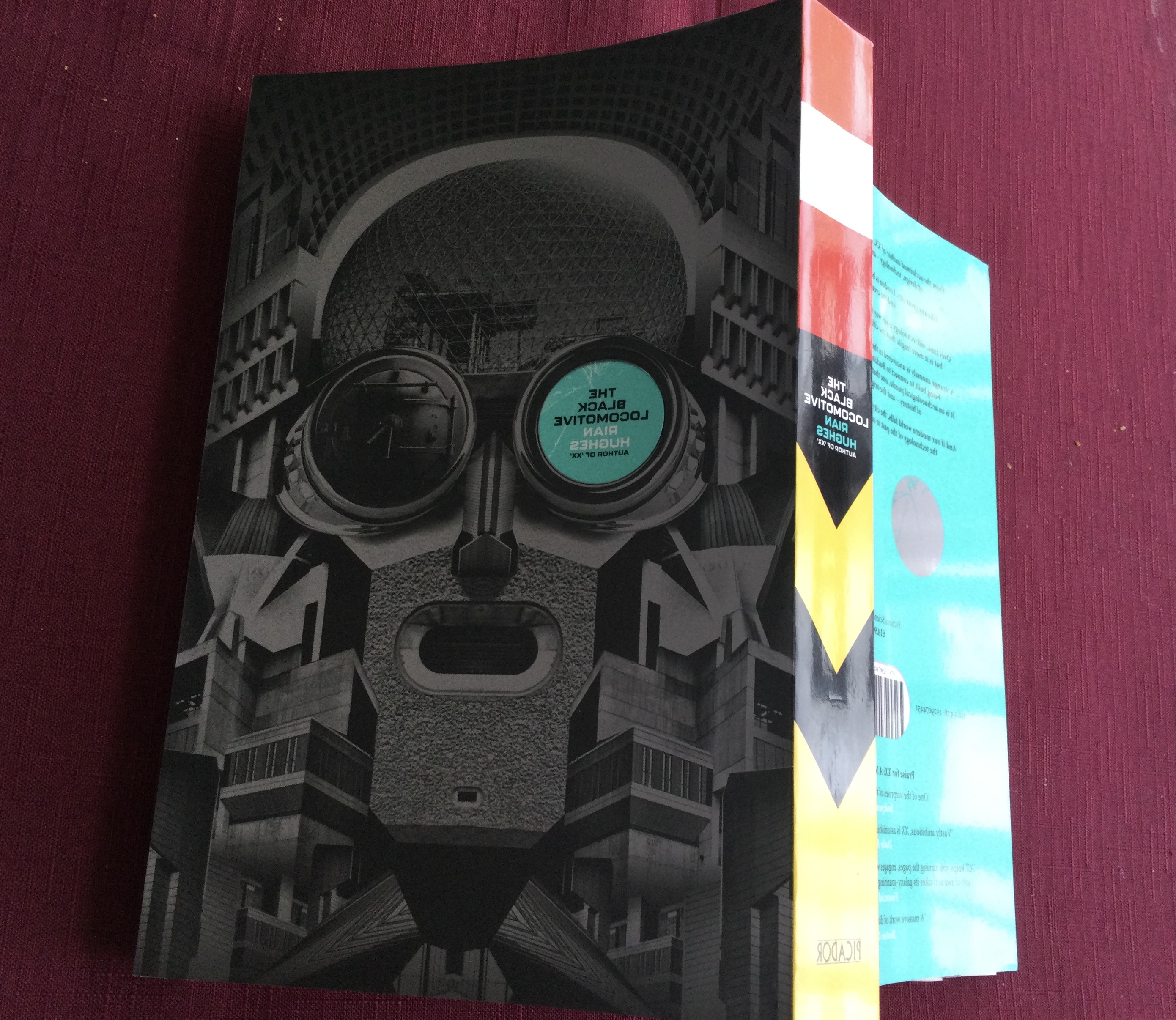Des Lewis will be 77 years old on 18 January 2025
Those who have read these episodic brainstorming reviews of mine must know they are very personal — rough-shod and spontaneous. Synchronicity and anagram mixed. I know they are not professional, never potentially publishable other than in the madness of my head, but I do hope they show grains of dark truth and cosmic panache.

These Des Lewis Gestalt Real-Time Reviews were founded in 2008.

‘What’s the loveliest word in the English language, officer? In the sound it makes in your mouth, in the shape it makes on the page? What do you think? Well now, I’ll tell you: E-L-B-O-W. Elbow.’ — THE SINGING DETECTIVE

“How shall a man find his way unless he lose it?” — Walter de la Mare

To any current genre author I have reviewed before — if you have a new story recently published or soon to be published in a collection or anthology, you may have a review by me of the story that also showcases where it is published. See HERE. (This is because I am no longer well enough to review as many books as I once did.)
Fresh Fictions, free to read HERE.
No AI input in preparation of my texts whatsoever.
THE NEW NONSCENIC
Photos here: https://conezero.wordpress.com/2024/02/24/d-f-lewis-recent-photos-1/


This is in itself a very enticing book to handle and then read, as I shall, with exactly 400 pages, full of pictures I have not really looked at in detail, and texts of various faces. I have tried not to read ABOUT this book in advance, but I was enticed to buy it because of my memory of XX.
And I have already read…
Pages 13 -21
Only one word I have not encountered before: aposematism.
And I am intrigued by this hardcore world of tunnelling under London for Crossrail, and two characters as separate POVs: Austin Arnold, some sort of overseer who encounters a numbered anomaly halting a massive drill, and Lloyd Rutherford, the official artist embedded in the project.
And a cross-section diagram, one of a crane reminiscent of a diagram that might appear in the Eagle comic should it be published today,
Words about hardcore are almost hardcore themselves, I find. Powerful shafts of heavy lifting by words here. Slipping in the phrase “symphony of the city” does not escape my notice. Anthill?
Pages 22 – 32
Signage and Concrete literally on the page as visuals, as well as a text regarding Austin’s view of the closet deep-breathing and idiosyncratically dressed (as if “Banksy had accidentally drawn all over him”) Rutherford, as they negotiate themselves nearer to whatever anomaly has halted such a huge drill, with references to secret places nearby that Austin knows about below central London.
Structural steel versus inner motivations of a mind.
I feel I am myself already captivated if not embedded within this book as a sort of real-time ‘artist’ observer on behalf of the literary arts, just as journalists are often embedded within armies at war….
Pingback: Book Reviewing as if an Embedded War Journalist… | The Des Lewis Gestalt Real-Time Reviews
Pages 32 – 47
“It was almost impossible to dig anywhere in London and not uncover something of interest.”
…this book, too, it seems. As with Rutherford’s own studio quarters full of an industrial past of reinforced aggregate or heavy haulage and there is also his own ready-made installation (but of what, I will not say) plus his paintings or drawings associated with this so-called fiction book’s embedded project.
As with this book’s own embedded visuals that affect me osmotically.
And Austin’s view of the nature of what Anomaly the drill had so drastically hit to its own halt (but of what nature, I will not say, even if I could yet tell myself!) — while I will eke out here the imposingly immoveable nature to an irresistible force of the Crossrail tunnel project’s boss: Georgia Ash!
Having writ what I wrote yesterday above, I now believe I’d surely make a rubbish embedded journalist of any project’s real-time, especially if I keep interpolating expressions like “(but of what, I will not l say)”!
Pages 48 – 61
“Hey, Hey, A. A.”
I think I know why I said what I said about being an embedded book reviewer in the book itself. But I am letting the idea percolate, before letting on. Suffice to say, meantime, that I fear for my very flesh and blood in a sort of war of attrition should I be found to issue spoilers. So I am lucky-dipping in this book’s lost property trunk or leaving messages or billets-doux for this book inside this book that will never be read. Slips of paper as well as pencilled marginalia. I think I am safe in saying openly, though, that I have enjoyed Austin’s backstory so far, now he is on the point of exploring the nature of the blockage anomaly of the project’s drill. An engaging backstory of his boyhood in 1975 when I was spawning kids myself, but I do recall in my own boyhood joining such postal clubs as the Smokebox Club and being written to by the equivalent of its Chief Engineer. There is no secret that this book is called Black Locomotive so I can say that it was interesting for me to be reminded that steam was nostalgic even as early as 1975.
I once took it for granted as a boy – travelling by steam.
Pages 62 – 77
Rutherford’s POV of Beck’s underground tube system and its ‘in-between un-spaces’ particularly in East London is quite remarkable as is the memory of when he was once mugged there. Then the project boss Georgia Ash’s POV of the toroidal anomalous thing that has halted the drill is as consuming as one would expect for any such leasehold POVs that are also filtered through this freehold author of the visionary XX.
As your recommended additional reading to co-resonate with this experience, I can call on two very recent reviews of mine as if I were then being somehow primed for this book’s entry into my life, as they are now retroprimed in their own right by this book! —
(1) The no-man’s land of the sidings each side of passenger trains slowly entering Liverpool Street Station, a remarkable story OFF THE TRACKS by Steve Duffy: https://dflewisreviews.wordpress.com/2021/06/30/the-night-comes-steve-duffy/#comment-22568
(2) The visionary archaeological digs & cave systems of THE PIT-CRYPTS OF KISH and THE SANATORIUM AT CHAKHIRSHIRINCELO by Albert Power here: https://dflewisreviews.wordpress.com/2021/07/23/azerbaijan-tales-by-albert-power/, also summoning to mind cave-system fiction in Robert Aickman’s ‘Visiting Star’ and in Haruki Murakami’s ‘Killing the Commendatore’, as well as in Jules Verne … and E.M. Forster’s Marabar Caves and more…
Possible advance spoiler:
Just by chance today I rediscovered an old ancient small-press published story of mine that, immodestly, I found hilarious! – containing this paragraph…
“On arriving at the inn, the rusted ruins of the Halt could still be seen, its broken teeth of rotting sleepers silhouetted against the fennish dusk, together with the giant bottle-openers and sardine tins of a steam train’s ancient holocaust.”
Whole story here: https://dflewisreviews.wordpress.com/the-fillings-of-the-sky/
Please see the fourth one, a vignette called IT’S A FUNNY LINE that may be in mutual synergy with The Black Locomotive?
Pingback: Un-Space | The Des Lewis Gestalt Real-Time Reviews
Pages 78 – 90
In this literally diagram-striated Picador tome, we now follow alongside Rutherford, speculating on “the semiotics of materials” vis à vis his usual car park where he parks his personality-defining car. Materials, especially unstriated concrete, its meaning, its brutalism compared to the “brutality with cardboard boxes” of “rough sleepers” (Cf sleepers of railtrack?) — and the nature of London sheltering its humans, not coddling them, people as a problem to be solved. Also “the liminal spaces between railway siding” et al, making me want to be equal to Rutherford’s own power of ‘interpretation’, the consequent synergy with rarely read aforementioned ‘Off The Tracks”, accidental geometries and the pareidolia I invest myself when taking photographs of ready-made materials and places…and so much more I cannot describe nor interpret nor evaluate as a vulnerable reviewer with a relatively short review banned from plot-spoiling, vulnerable, too, from the sharpness of a shelter that fails to coddle me as I dig deeper into the book’s own parameters.
And then we follow alongside Ash, Austin, Rutherford as two new characters try to study and interpret the anomaly and its configurations, a section that makes me think of the mere possibility of any consequent, necessarily inadvertent synergy with my own ‘It’s A Funny Line’ mentioned above. Whatever the case I feel I will be as durably awestruck with this book as I was with XX earlier.
From the ‘rough sleepers’ above to Rutherford’s own ark of living and sleeping…
Pages 92 – 105
Alongside Rutherford again in an amazing section sectioning his own apartment block, ROARK TOWER (anticipating a later unrowable ark in this book?) — the place where he lives despite being able to afford better. So why live here within such social engineering? Only the astrology of concrete places may tell us, I guess. (I was a very keen student of esoteric astrology in 1975, as it happens, attending a course then at the Franklin College – I think I recall the correct name – in Chalk Farm.) (And the name Chalk Farm somehow obliquely evokes this section’s reference to Van Gogh!)
“Unplanned randomness” to obviate an intentional fallacy? Places we travel through but never goto. “Graff crews and taggers” as the new Van Gogh, Banksy et al. “Road rash”, too. The odd clothes-line to obviate ‘cowed individuality.’ One method of such an injured land is to merge with it? As I still travel this book with the “required awe.” Listening to its lullaby of a heartbeat. Reader of this book needs also to be an outlier.
And we, later in this section, begin to focus on the at least hinted awe-inspiring anomaly that contains our hatch-point of entry? I am trying, meantime, to resist being impelled to keep turning these pages.
Further recommended reading — THE WOUNDED ISLAND and THE INJURIES OF TIME (links to my detailed real-time reviews below), and maybe books by W.G. Sebald, too?
There are, inter alia, many thumbnails of types of apartment block cladding in this book.
Pages 106 – 117
“The organic curves, the deep sense of history…”
If what I gave above yesterday was recommended reading, today’s meditation upon Roark Tower in this book is essential reading, one ratchet above required reading. The nature of humanity and the structures it has built for itself…the synergy or symbiosis or parasitism? para-Sites?
Which meditation dovetails neatly today with two newish characters, Yumi Lark and Martina Martinez (the latter’s surname indicating that she must be married?) – as they analyse materials…
befORE ORe ORigin meteOR
OR or rOARk?
iROn bROnze
ORganic histORy
“It’s not unusual. Before the smelting of ore had been perfected, Bronze Age iron was almost entirely meteoric in origin.”
Pages 118 – 131
“There was a peculiar intimacy in anonymity.”
We are now entering the nitty gritty, I feel. And this is compelling stuff to ‘tally and cross-reference’ as Rutherford comes into his own by dint of our visiting his idiosyncratic and entropic apartment – entropic because he had never found its heating thermostat? All the piping vestigial. For whom could it have been built or whom had been created to fit it? What do I know?
His ability to tally and cross-reference the people he knew by random contact amid the millions of people who populate London’s is intriguing and maybe one of them got him the artist in residence job with Crossrail? And now the fonts change more regularly with changing respective POVs. Even the Ash woman is bemused by his presence on the project as we are about to enter, via whichever POV, the Anomaly, but with whom will we be allowed to enter it? I know whose it will be or can safely guess, but can you? I do not know, however, which other radio station Rutherford could get on his Long Wave radio in addition to Radio 4.
Any of the “urban camouflage” disguised as a waspish crash barrier, by the way? Meanwhile, something that sounds as if it is a Shakespearean expletive! — ”Curves and triangles.”
There will be now be a news blackout from this review, till later perhaps? Or, thinking about it, it is the anonymous reader who enters the Anomaly, and it is none of the fictional characters being read about!
POSSIBLE INADVERTENT REAL-TIME SPOILERS OR MISREPORTING HEREONIN…
Pages 132 – 147
Inside the now relocked hatch, but who is? And what is seen and felt and heard? What, if any, human conveniences of bodily interface? Certainly silence is heard when compared to the sounds in the real world, such as “the backgROund dROne of aeROplanes” (my capitals). Organic versus hardcore. Toroidal versus tidal? The Deros and Teros of mythology, et al.
And such human infiltration into whatever has been entered by whom — how does that affect the overground and its routines that we once took for granted? Very powerful writing in this book in answer to that question — making the effects of Covid vividly and Jungianly co-vivid? Not just a co-vivid dream we all now experience, but such a dream become reality itself, it feels to me.
Pingback: Two spoilers on the brink today… | The Des Lewis Gestalt Real-Time Reviews
Pages 148 – 157
We explore beyond, now, two hatches, within one character’s POV, amid proportions, portholes, orientation, corridors, Corinthian helmet, short sword, half-arrows, and “balconies without balustrades that went nowhere”…
And beyond the hatches the way of overground London and the other characters, there are arguments ensuing between them, particularly about cause and effect, if not synchronicity (the latter being Jung’s view of what powered astrology, not the former!)…
“You think this is all coincidence?”
More of my photographs in 2008 of this “sculpture park” as a ‘work in progress’ towards the end of this linked page, a park with now what dawns on me as what might have been a “false hORizon” or “artificial hORizon”… (my ‘Romanesque capitals’): https://zencore2007.wordpress.com/89-2/
Pages 158 – 169
“a grammar of form”
Austin appropriately surveys and discusses motor cars and their makes in the somehow regrouped or devastated overground central London (cars with inferred synchromesh, “fuel tolerances and net torque” &c.) as part of this book’s potential pattern of chaos theory or butterfly effect, cause and effect, serendipity, coincidence, gestalt …’synchronised shards of random truth & fiction’ (‘&’ or ‘and’) having been an expression that has long been googleable…
I am utterly fascinated, meanwhile, by my ability — via this book — to explore the underground Anomaly, and if I delve too far in setting out my feelings about it, I would spoil the effect should you have not entered it yet. Suffice for me to ask something perhaps trivial — how can I survive with just Quavers and no drink? Or have I forgotten what I have taken down here with me? My mind as well as my provisions. Genuinely a Work in Progress. Like all real-time reporting.
Locomotive = as in having loco motives
Madness as a means to a meaning that is meant?
Pingback: “a grammar of form” in Vigeland | The Des Lewis Gestalt Real-Time Reviews
This review will now continue here: https://nemonymousnight.wordpress.com/the-black-locomotive/
This IS indeed continuing here: https://nemonymousnight.wordpress.com/the-black-locomotive/